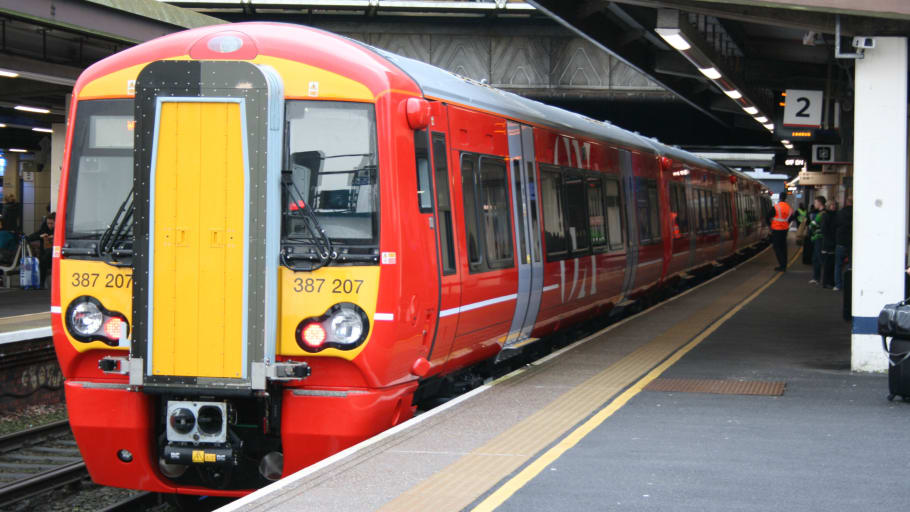A significant rail strike is causing disruption for travellers heading to and from major airports around London. Services to Gatwick, Luton, and Stansted airports are affected, prompting potential delays and cancellations as passengers negotiate their travel plans.
The industrial action involves key rail operators, impacting critical connections between London and its airports. Passengers are advised to check their travel routes in advance and anticipate possible inconveniences. Understanding the extent of these disruptions can aid in planning journeys more effectively.
Extent of the Rail Strikes
The latest strike action by train drivers has paralyzed several rail services, leading to notable interruptions in airport connections. The Gatwick Express shuttle service, a vital link between London Victoria and Gatwick Airport, has ceased operations, severely affecting passenger movement.
Additionally, train services from London Liverpool Street to Stansted Airport are reduced to hourly departures. Thameslink services have also been hampered, with only a limited non-stop service available between London Kings Cross and Cambridge. A shuttle service is operational between London St Pancras, Luton, and Luton Airport Parkway, but many other routes remain disrupted.
Participants in the Strike
Today’s industrial action encompasses a wide range of train operators, including c2c, Greater Anglia, GTR Great Northern, and Thameslink, among others. Services provided by Southeastern, Southern/Gatwick Express, South Western Railway (SWR) main line, and SWR Island Line on the Isle of Wight are also affected, adding to the complexity of the situation.
This rolling industrial action commenced last Friday and involves drivers across 16 train companies. The widespread nature of the strikes underscores the coordinated effort amongst railway workers to address ongoing disputes, highlighting the challenges faced by both the industry and passengers.
Impact on Travellers
Travellers are urged to find alternative routes or transportation methods well in advance. Flight schedules may need adjustments to accommodate for longer commuting times, especially for those relying on affected train lines.
Proactive measures such as pre-booking taxis or rental cars may alleviate some of the inconvenience. Considering the potential for ongoing disruptions, having contingency plans is crucial for maintaining travel schedules.
Strategic Travel Planning
The ongoing industrial actions necessitate adjustments in travel plans, urging passengers to explore all available options to mitigate inconveniences.
Railway Union and Stakeholder Responses
The strike action has drawn varied responses from different stakeholders. Trade unions have reiterated their demands for improved working conditions and fair employment practices, reflecting the persistent nature of their grievances.
On the other hand, transport authorities and airport operators are actively seeking to manage the situation, implementing contingency plans to maintain a level of service and reduce traveller inconvenience. The dialogue between the unions and railway companies continues, with hopes for a resolution that mitigates further disruption.
The broader implications of these strikes on the transportation network highlight the delicate balance between labour rights and service provision.
The ongoing discussions between stakeholders aim to settle these disputes and restore regular services for passengers.
Addressing the current grievances of the railway workforce is critical to resolving the ongoing disruptions and restoring passenger confidence in public transport.
Long-Term Implications of Rail Strikes
The repeated occurrence of rail strikes raises concerns about the long-term stability of rail services. Frequent disruptions can undermine passenger confidence, potentially shifting preferences towards more reliable travel alternatives.
Moreover, the economic implications of these strikes cannot be ignored. Affected airports and allied businesses may experience a downturn in passenger numbers, impacting revenue in the aviation and tourism sectors.
As negotiations continue, it remains critical to consider the broader economic impacts and strive for sustainable resolutions.
Sustained industrial actions could have lasting consequences on travel habits and the economic health of the transportation sector.
Mitigation Strategies for Affected Passengers
Passengers should actively seek out available updates from rail service providers and airport authorities to stay informed about the latest developments in the strike action.
Utilizing social media and official websites will ensure travellers receive timely information, allowing them to adjust plans accordingly.
Effective communication and proactive travel planning are essential in navigating the ongoing rail strike challenges.
In conclusion, the rail strikes affecting London area airports underscore the importance of clear communication and strategic planning for all passengers. Considering alternative routes and staying informed through regular updates can significantly mitigate the impact of these disruptions. While challenges remain, the focus on resolution and strategic planning promises to alleviate passenger difficulties in future travel scenarios.

